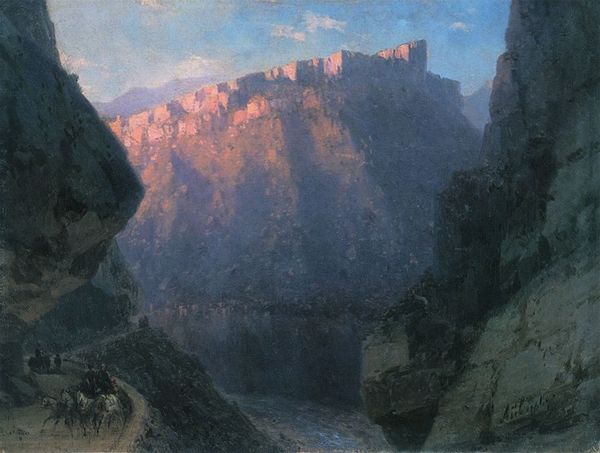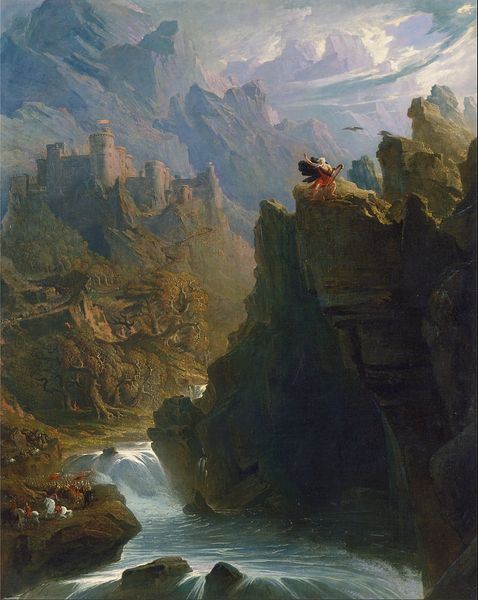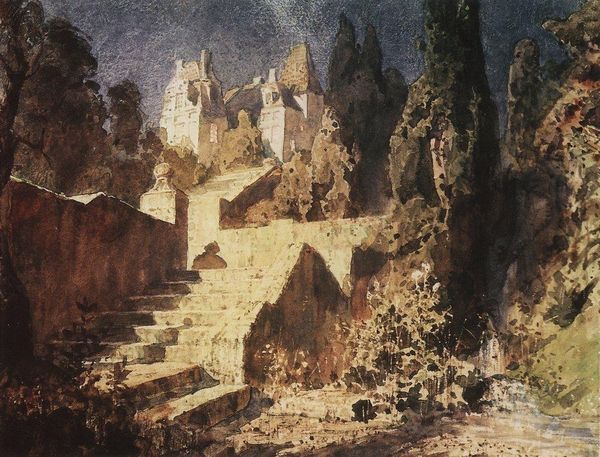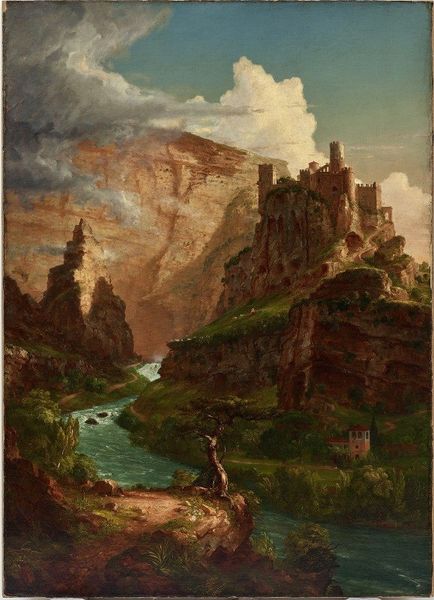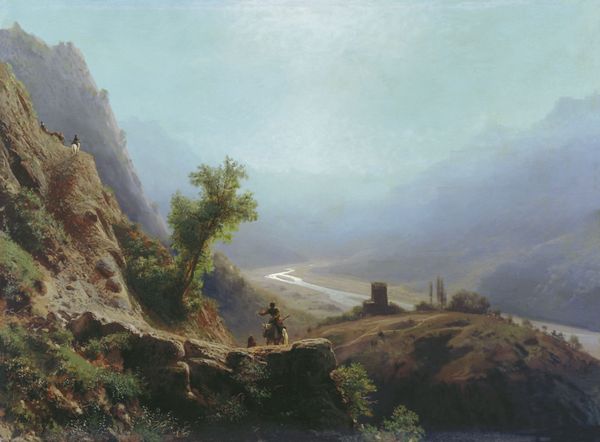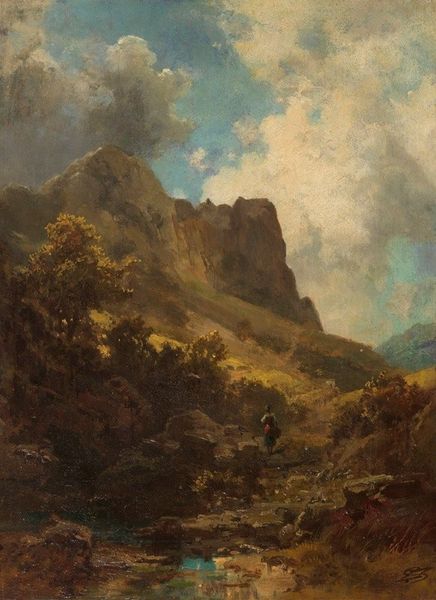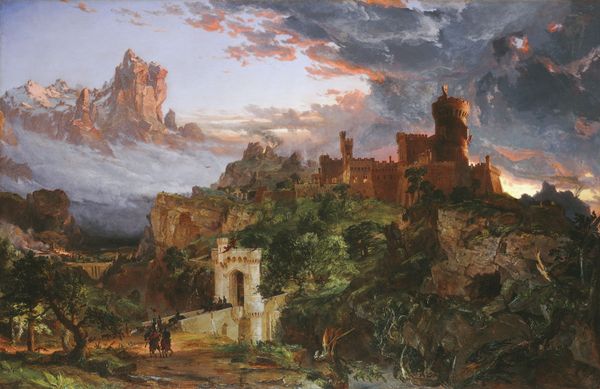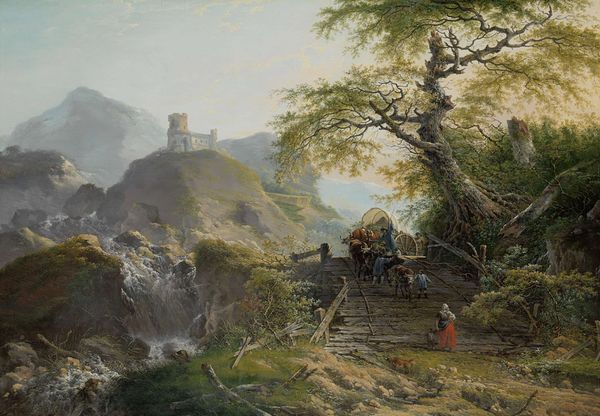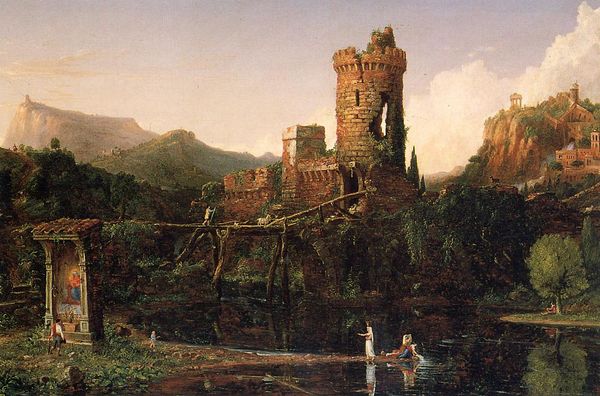
Copyright: Public Domain: Artvee
Editor: Carl Spitzweg’s “Nixenfang,” painted around 1860 using oil paints, immediately evokes a sense of fantasy. You have a crumbling castle and ethereal figures, but the scene also feels strangely grounded in its detailed landscape. How do you interpret this interplay between the real and the fantastical? Curator: It’s a masterful construction of Romantic ideals within the context of the rising German bourgeoisie. Spitzweg was documenting, perhaps idealizing, their leisure and relationship with nature. Consider how genre painting, scenes of everyday life, gained popularity as a way for the middle class to see themselves reflected – and perhaps elevated – in art. Editor: So the nixies, those water spirits, were part of that elevation? Curator: Exactly. They blend the everyday with folklore, lending a sense of magic. What strikes me is the location – ruins! Romanticism was obsessed with them as symbols of the past and the fleeting nature of human achievement. How do those crumbling walls play against the fisherman at the top? Is it commentary on social hierarchies? Who gets to play, and who gets to watch? Editor: I see what you mean. The man fishing almost seems oblivious, separate from the playful abandon below. It feels like the painting is quietly observing different social roles. Curator: Precisely. Spitzweg offers a glimpse into the desires and anxieties of a society undergoing significant change, cleverly using imagery to subtly discuss these tensions. Editor: I never thought of the ruins and figures in that way, but placing it within that socio-political framework brings the painting to life. Thanks! Curator: The pleasure's all mine. It highlights the way art can reflect its present while evoking an awareness of its past.
Comments
No comments
Be the first to comment and join the conversation on the ultimate creative platform.
